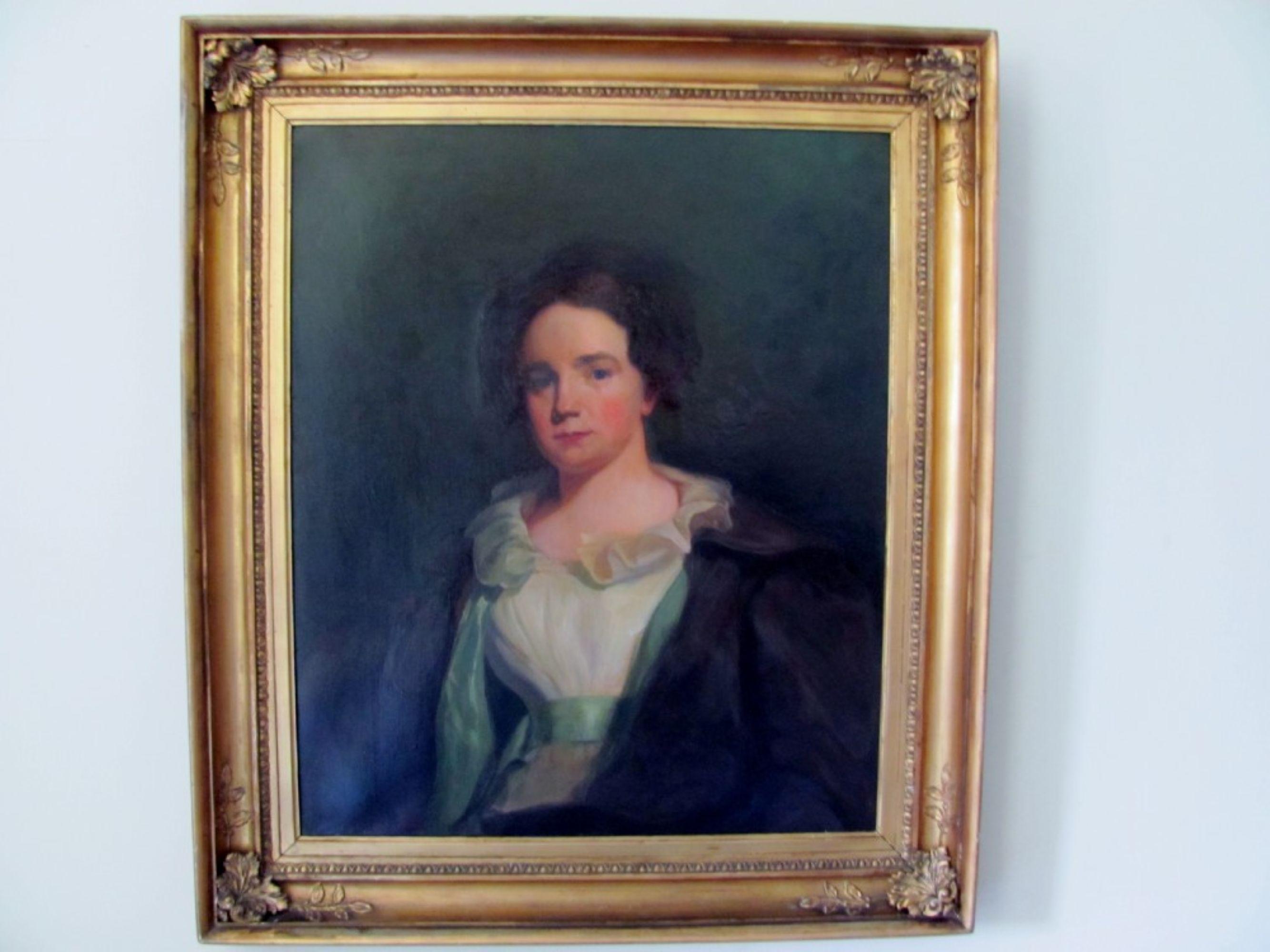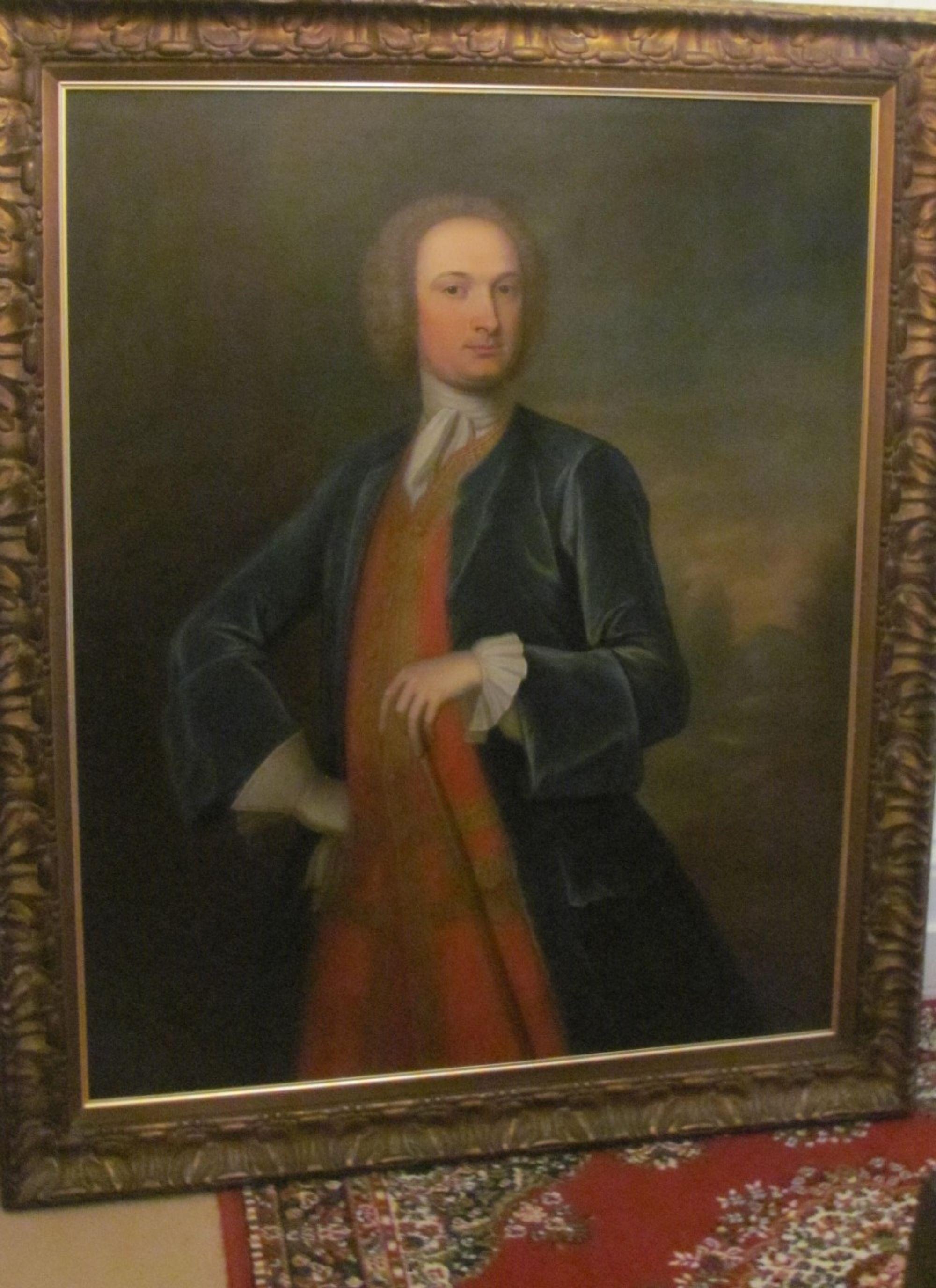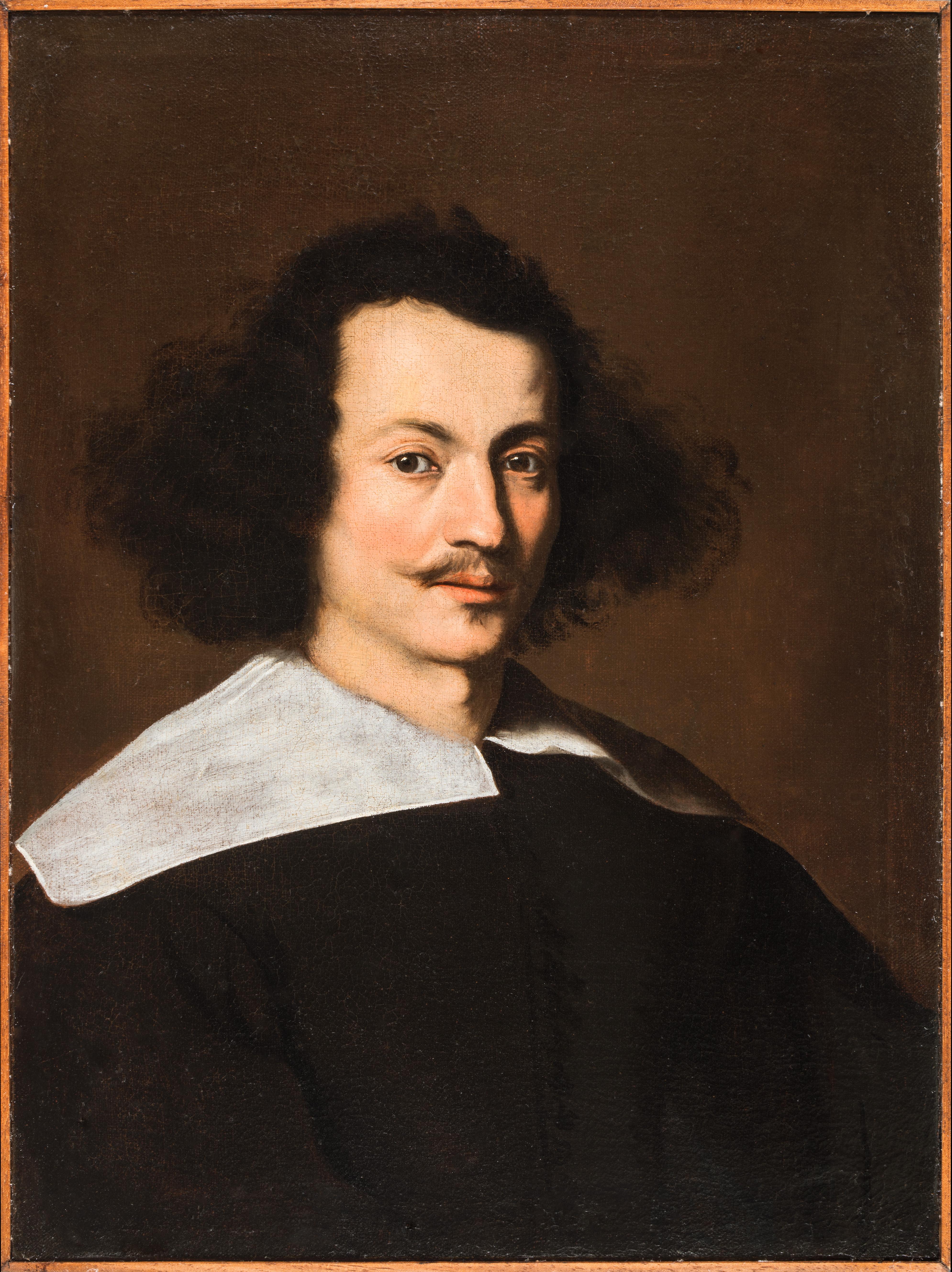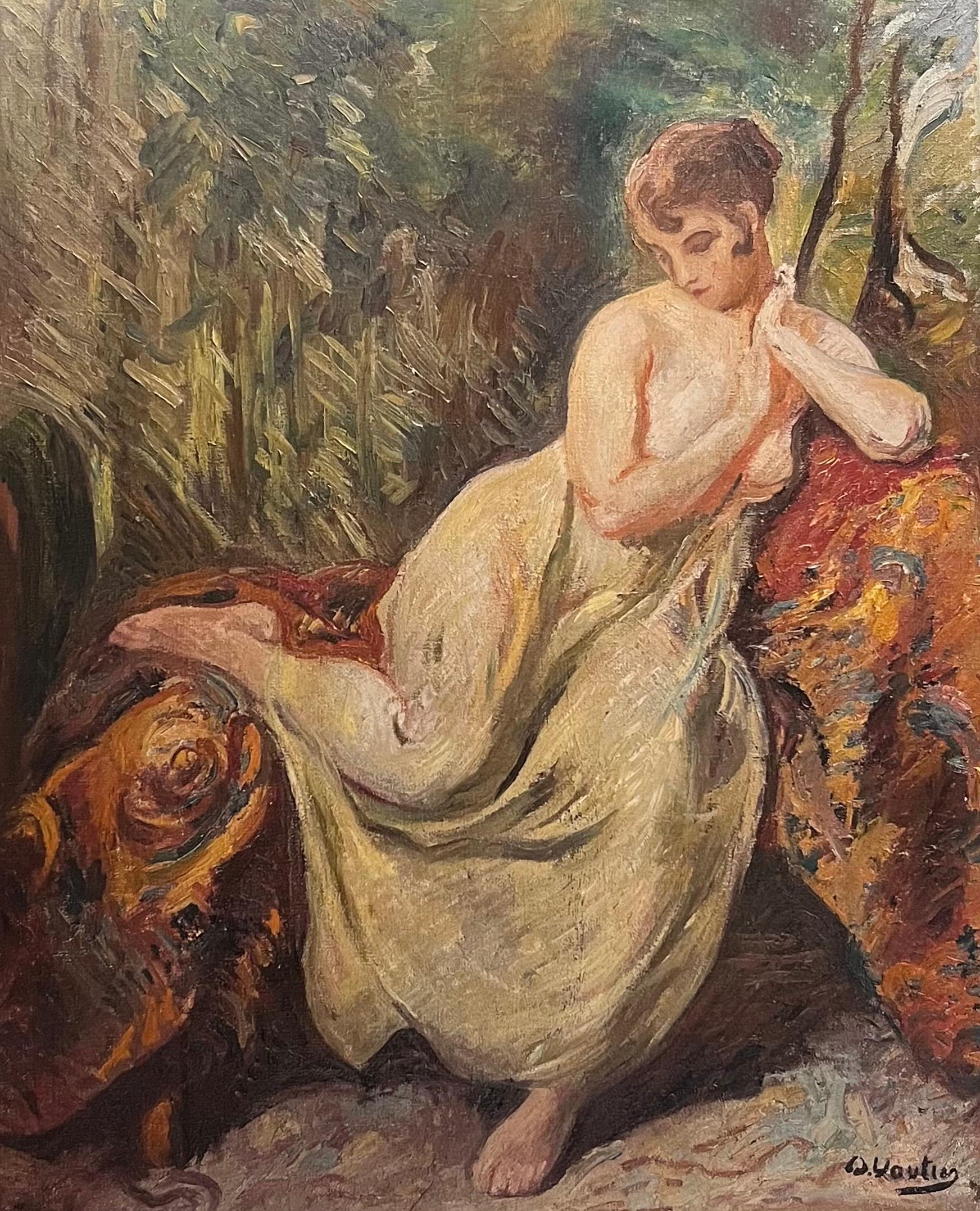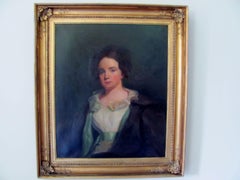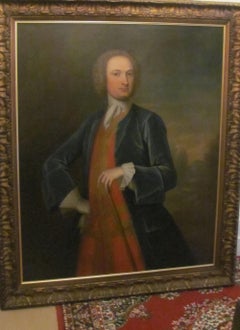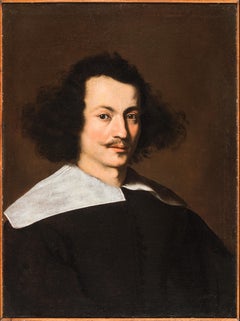Portrait Medici Sustermans Paint Oil on canvas Old master 17th Century Flemish
View Similar Items
Want more images or videos?
Request additional images or videos from the seller
1 of 14
Portrait Medici Sustermans Paint Oil on canvas Old master 17th Century Flemish1660-1699
1660-1699
Price:$7,396.05
$9,304.71List Price
About the Item
- Creation Year:1660-1699
- Dimensions:Height: 41.74 in (106 cm)Width: 34.26 in (87 cm)
- Medium:
- Movement & Style:
- Circle Of:Giusto (or Justus) Sustermans (Antwerp, 1597 - Florence, 1681) (1597 - 1681, Flemish, Italian)
- Period:
- Condition:
- Gallery Location:Riva del Garda, IT
- Reference Number:1stDibs: LU98819282162
About the Seller
4.9
Platinum Seller
Premium sellers with a 4.7+ rating and 24-hour response times
Established in 2017
1stDibs seller since 2018
257 sales on 1stDibs
Authenticity Guarantee
In the unlikely event there’s an issue with an item’s authenticity, contact us within 1 year for a full refund. DetailsMoney-Back Guarantee
If your item is not as described, is damaged in transit, or does not arrive, contact us within 7 days for a full refund. Details24-Hour Cancellation
You have a 24-hour grace period in which to reconsider your purchase, with no questions asked.Vetted Professional Sellers
Our world-class sellers must adhere to strict standards for service and quality, maintaining the integrity of our listings.Price-Match Guarantee
If you find that a seller listed the same item for a lower price elsewhere, we’ll match it.Trusted Global Delivery
Our best-in-class carrier network provides specialized shipping options worldwide, including custom delivery.More From This Seller
View AllGentleman Portrait Knight Rigaud 18th Century Paint Oil on canvas Old master
Located in Riva del Garda, IT
Hyacinthe RIGAUD (Perpignan 1659 - Paris 1743) School of
Portrait of a gentleman in armour: Monsieur Jean Francois Raymond de Lasbordes, Regimental Officer of the Landes, as well ...
Category
18th Century Old Masters Paintings
Materials
Oil
$9,811 Sale Price
20% Off
Venus Love Guercino 17th Century Paint Oil on canvas Old master Emilian school
Located in Riva del Garda, IT
Giovanni Francesco Barbieri, the Guercino (Cento 1591 - Bologna 1666), workshop
Attributable to, Benedetto Gennari (Cento, 1633 - Bologna, 1715)
Venus disarming Love
oil on canvas
...
Category
17th Century Old Masters Paintings
Materials
Oil
$10,917 Sale Price
20% Off
Portrait Notable Hudson 18th Century Paint Oil on canvas Old master England
Located in Riva del Garda, IT
Thomas Hudson
(Devon 1701 - London 1799)
Portrait of a Notable in his Study
Oil on canvas
124 x 102 cm.
In antique frame 142 x 120 cm.
This fascinating portrait is a valuable te...
Category
18th Century Old Masters Paintings
Materials
Oil
$9,304 Sale Price
20% Off
Susanna Old Men Religious Roma nschool 17th Century Paint Oiul on canvas Italy
Located in Riva del Garda, IT
Painter active in Rome in the early 17th century
Susanna and the Old Men
Oil on canvas
76 x 62 cm.
with frame 92 x 78 cm.
This valuable painting illustrates the piquant episode, ta...
Category
17th Century Old Masters Paintings
Materials
Oil
$9,800 Sale Price
20% Off
Allegory Of Europe Solimena 18th Century Paint Oil on canvas Old master Italy
Located in Riva del Garda, IT
Francesco Solimena (Canale di Serino 1657 - Barra 1747)
workshop/circle
The Allegory of Europe
oil on canvas
102 x 76 cm. - with frame: 119 x 92 cm.
The work, which can be placed ...
Category
18th Century Old Masters Paintings
Materials
Oil
$8,560 Sale Price
20% Off
Ecce Homo Castello 17th Century Paint Oil on canvas Old master Genoese school
Located in Riva del Garda, IT
17th-century Genoese School
Workshop of Valerio Castello (Genoa, 1624 - Genoa, 1659)
Ecce homo
Oil on canvas
117 x 99 cm.
In frame 138 x 118 cm.
The Ecce Homo, the subject of our ...
Category
17th Century Old Masters Paintings
Materials
Oil
$14,887 Sale Price
20% Off
You May Also Like
17th Century by Jan Janssens Saint John the Baptist Oil on canvas
Located in Milano, Lombardia
Jan Janssens (Ghent, Belgium, 1590 - after 1650)
Title: Saint John the Baptist
Medium: Oil on canvas
Dimensions: without frame 76 x 62 cm – with frame 97 x 83 x 6 cm
Not signed
Expe...
Category
17th Century Old Masters Portrait Paintings
Materials
Canvas, Oil
19th century Portrait of a lady, Priscilla Osborn, William Jacob Baer
Located in York, GB
PORTRAIT OF PRISCILLA, MRS WILLIAM OSBORN half length, oil on canvas,
WILLIAM JACOB BAER (1860-1941) housed in the original early 19th c gilt cavetto frame
The overall size being 94....
Category
19th Century Old Masters Portrait Paintings
Materials
Oil
$3,305 Sale Price
20% Off
Free Shipping
large 18th century portrait gentleman oil on canvas
Located in York, GB
A fine, imposing 18th century portrait of an unknown aristocrat,housed in a gilt frame
The artist is also unidentified but certainly a talented hand, in the circle of one of the fine old masters of the period. Unsigned
The size overall is 148 x 121 cm whilst the painting is 128 x 101 cm
In overall good condition the frame at the bottom has bowed slightly
The painting has been checked whilst being cleaned and has not been affected in any way .
SHIPPING
Free delivery to mainland uk ,worldwide shipping available please email for quote
Delivery usually within 14 working days, insured
please provide telephone/email details for courier.
All taxes/customs etc to be paid for by purchaser.
RETURNS (The Consumer Contracts Regulations) Whilst we are sure that you will be extremely happy with your purchase,
if for any reason you are not, then you are entitled to return the item to us for a refund.
For all purchases made
you are entitled to return the item(s) for a period of up to 14 days
following receipt by you or a representative indicated by you.
Please contact us to confirm that you are returning the item(s)
and the reason for doing so.
Upon receipt of the item(s) we will refund the purchase price via your original payment method...
Category
18th Century Old Masters Portrait Paintings
Materials
Oil
$7,588 Sale Price
44% Off
Free Shipping
17th Century by Bernardo Strozzi Portrait of a man with white collar
By Bernardo Strozzi
Located in Milano, Lombardia
Bernardo Strozzi, also known as “Il Cappuccino” and “il Prete Genovese”, (Genoa, Italy, 1581 – Venice, Italy, 1644)
Title: Portrait of a man with white collar
Medium: Oil on canvas
D...
Category
17th Century Old Masters Portrait Paintings
Materials
Canvas, Oil
The Reflection of The Model by Otto Vautier - Oil on Canvas 81x65 cm
Located in Geneva, CH
Otto Vautier is a renowned Swiss painter, born in 1863 in Düsseldorf. He was influenced by a family of artists and developed his style during his training in Munich and Paris. Vautie...
Category
Early 20th Century Old Masters Nude Paintings
Materials
Canvas, Oil
A portrait of a lady and her daughter with an exotic bird
By Michael Dahl
Located in Bath, Somerset
A portrait of a lady three-quarter length, seated in an interior, wearing a red silk gown draped in a pink silk sash with an exotic bird perched on her hand and one arm resting on a stone plinth, her young daughter wearing a green silk gown standing at her side.
Oil on canvas, housed in a period 'Lely' giltwood frame.
This double portrait was painted at the height of Dahl's career in circa 1715 when Dahl had become firmly established as one of the leading portrait painters in Britain. Although the identities of the sitters are currently unknown, it is a sensitive depiction of a close and affectionate bond between a mother and daughter, with the young girl's hand resting affectionately on her mothers lap. The tamed exotic bird adds a charming decorative element which also serves to convey the high social status of the lady, given only the very wealthy would be able to own such a rare and expensive pet and the lively colouring of the bird's feathers is reflected in the colours of the sitters' silk gowns.
Provenance: Private collection, London
Michael Dahl (Stockholm 1659-1743 London) was born in Stockholm in Sweden and studied under Martin Hannibal (d 1741) and later with David Klöcker Ehrenstrahl. In 1682 he travelled to London, where he became acquainted with Godfrey Kneller and Henry Tilson, and in 1685 he left for Europe with Tilson, working briefly in Paris before continuing to Venice and Rome, where they stayed for about two years. In Rome Dahl converted to Roman Catholicism and gravitated towards the circle of Christina, former Queen of Sweden, who sat for him (Grimsthorpe Castle, Lincs). He returned to England with Tilson via Frankfurt and arrived in London in 1689, staying in England for the remainder of his career.
During Dahl's absence, Kneller had consolidated his supremacy in London as the most fashionable portrait painter, but Dahl rapidly became Kneller’s closest competitor. His patrons probably had roots in the Swedish diplomatic circles, but it expanded as a result of his ability and his agreeable personality. His prices were lower than those of Kneller and he favoured softer, more diffused, colour tones and could respond to his sitters with sincerity and humanity. Politically, Kneller supported the ascendant Whigs while Dahl was a Tory, but they frequently painted the same sitters from both parties, and in spite of fundamental differences in technique and temperament, their work was sometimes similar in appearance.
Dahl was prolific but rarely signed his work, and comparatively few of his portraits were engraved in mezzotint, the method used by Kneller to widen his reputation. By 1690 he had painted the aged Duke of Schomberg (engraved by William Faithorne) and Prince George of Denmark (London, Kensington Palace). He was ignored by William III but received commissions from Princess Anne, including one for a portrait of herself (Oakly Park, Ludlow, Salop). He also painted the future Duke and Duchess of Marlborough, and his informal portrait of the Duchess (Althorp House, Northants), formerly attributed to Kneller, is perhaps the most intimate of all images of her.
During the 1690s he secured the patronage of Charles Seymour, the ‘Proud’ 6th Duke of Somerset, who ordered a series of seven full-length portraits of notable contemporary beauties from Dahl (1690s; Petworth House, W. Sussex, NT). This was originally a scheme similar to Kneller’s more famous ‘Hampton Court Beauties’, but the portraits were subsequently reduced to three-quarter-length formats. The features of the sitters are not individualized, but they possess a decorative, languorous glamour that recalls Lely rather than Kneller. Somerset gave Dahl further employment over the next 25 years.
In 1698, following the death of Klöcker Ehrenstrahl, Dahl was offered the post of court painter at Stockholm, which he apparently refused, preferring to remain in London at his studio in Leicester Fields, near the Swedish legation. In about 1700 he was joined by a young compatriot, Hans Hysing, who worked with him for many years. Dahl seems not to have married until after 1708, He had a son Michael (d. 1741), also a painter, of whose work nothing is known, and two daughters.
After the accession of Queen Anne in 1701, she and Prince George sat for a number of official portraits. His royal patronage ceased with Queen Anne’s death, and when Dahl refused to paint the infant Duke of Cumberland in 1722. He was suspected of Jacobite sympathies, and relations had cooled between him and the Swedish legation. However, his practice continued to prosper, and he acquired another important patron in Edward Harley, 2nd Earl of Oxford, who shared his political views and whose circle included the architect James Gibbs and the poets Matthew Prior and Alexander Pope, all of whom Dahl painted. Oxford commissioned several portraits of himself. In the earliest (1719; Welbeck Abbey...
Category
Early 18th Century Old Masters Portrait Paintings
Materials
Canvas, Oil
$26,489 Sale Price
20% Off
Recently Viewed
View AllMore Ways To Browse
Pierre Mignard
Frans Pourbus
20th Century Painting Horse
Original Wine Art
Chinese Woman
Montmartre Paris
Antique Paintings Of People
Claude De France
1950s Painting Landscape American
Chapter One
Large Sky Oil Painting
Signed Jazz
Impressionist French Painting 1930
Northern California Artists
Tuscany Art
Wilderness Art
Hill Country Painting
Landscape Painting Signed James
